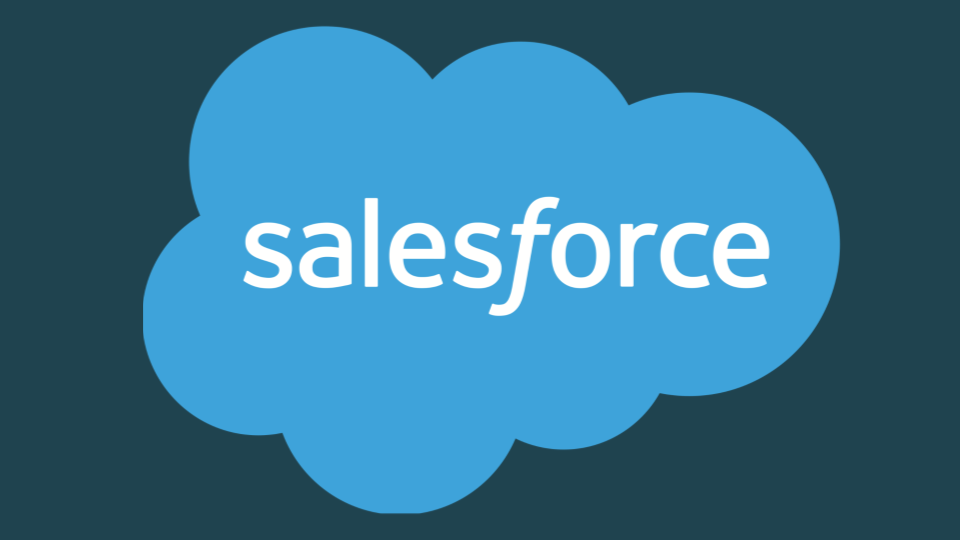How Apple, Salesforce, Walmart and Other Industry Titans Launched Multi-Sided Platforms to Dominate their Markets
Beginning in the mid-2000s, several of the world's most dominant businesses launched platform offerings to drive market growth, improve their positioning and capture customer loyalty. These industry-leading companies included the likes of Apple, Salesforce, Walmart, Home Depot, Nike, Best Buy and GE Healthcare.
Each of these companies could be described as traditional pipeline businesses (see image below), meaning they create value in a linear manner, taking control of raw inputs, transforming or adding to them, and selling them to consumers. But, since their founding, each of these companies have integrated platform concepts and strategies into their core pipeline businesses.
Unlike platform luminaries such as Facebook, Uber or Airbnb, these pipeline companies did not emerge from the primordial soup as platforms, with network effects in their DNA—the basis of their existence. Rather, they had strong, established pipeline businesses, in many cases with dominant or burgeoning market share. Yet they each decided to (seemingly) deviate from their core business model to launch new, adjacent platform offerings. But why?
Launching a platform strategy, and building network effects, is not a simple pursuit. The journey to build and launch a multi-sided platform or marketplace involves reimagining core operations, value propositions and customer relationships. It involves navigating the complexities of integrating new users into the ecosystem, all while leveraging existing strengths and retaining true to the core business.
So why would so many established, successful pipeline businesses—like Apple, Nike or Salesforce—launch complementary platform offerings (and introduce this complexity into the organization)?
Platform business models create value in fundamentally different ways from pipeline businesses.
Well, to put it simply, the most valuable companies in the world are platform businesses—in healthcare, and across technology sectors more broadly. Globally, 7 of the top 12 largest companies are platforms. In the private market, 60%-70% of unicorns are platform businesses. When compared to pure software or SaaS companies, platforms grow faster, reach greater profitability and produce unmatched shareholder value. Contrary to popular belief, recent research also reveals that platform businesses are less risky, succeeding at higher rates than pure pipeline businesses.
Securing Market Dominance through Platform Business Strategy: Success Stories
Companies that have leveraged their existing pipeline businesses to launch platform offerings have realized increased revenue growth, shareholder value and customer retention. Below are a handful of brief case studies about how Salesforce, Apple and others have built out multi-sided platform strategies to drive new growth:
Salesforce AppExchange
Salesforce started as a pioneer in cloud-based CRM software, but expanded its ecosystem through the AppExchange in 2005. This platform allows third-party developers to build and sell applications that integrate with Salesforce’s core offerings, enhancing the value of its CRM system and creating a thriving developer community. Based on our analysis, we estimate AppExchange represents about 50% of Salesforce’s overall revenue, and is the fastest growing segment.
Apple App Store
Originally a pipeline company focused on selling hardware, Apple opened its ecosystem to third-party developers in 2008. The App Store has grown consistently quarter over quarter, setting an all-time revenue record in Q1 2024, with Apple’s services segment earning $23.1 billion, an 11% year-over-year increase. The App Store is estimated to comprise about 25%-35% of Apple’s services revenue, while also generating $1.1 trillion for its ecosystem of app developers (in 2022 alone).
Online 3rd Party Marketplaces
Walmart, Best Buy and Home Depot began as traditional, brick-and mortar-retailers. Then, they built online stores. And most recently, they have each launched true marketplaces that allow third-party sellers to market products on their online platforms, reach a vast customer bases under a trusted brand. Walmart’s marketplace, in particular, has seen multiple categories grow by 20-30% year-over-year, driven by an increase in third-party vendor listings and sales.
When to Launch a Platform Offering: 5 Factors to Consider
So, as an enterprise healthcare company, when (and under which conditions) might you consider building a platform offering to complement and enhance your core, pipeline business? While the answer is obviously different for each company, below are five factors which may indicate the timing and conditions are right to begin developing a platform strategy and offering.
1. You’re facing greater competitive pressures
Even dominant companies face threats from competitors who innovate faster, cater to changing consumer preferences or can better address specialized use cases. By embracing a platform strategy, enterprises can take advantage of the innovation taking place around them, and ingrain themselves, technologically and contractually, in between customers and third parties.
For example, many EHRs, arguably the pure software titans of healthcare, launched their own third party app marketplaces to help entrench themselves as the central digital infrastructure of the hospital, while producing a new revenue stream by charging app developers to participate in the marketplace. This platform strategy, in theory, allows EHRs to achieve greater stickiness with customers, while heavily influencing market access for new, innovative digital health solutions that could begin to compete with elements of EHR functionality overtime. While most EHRs haven’t executed this strategy exceptionally well, Apple’s creation of the App Store is one of the most profound examples of a successful innovation marketplace, which precipitated the downfall of their chief competitor at the time, Research in Motion (Blackberry).
2. Your revenue growth has slowed or plateaued
Companies looking for new revenue streams or experiencing plateaued growth in their core business may look for new avenues to generate revenue. This could be because the company is the victim of its own success, it's grown so quickly there is less remaining market opportunity for the core business, or it could be because it is facing increasing competition or evolving consumer preferences (or both).
A platform model can provide multiple, new streams of income, such as transaction fees, subscriptions and advertising. Salesforce’s AppExchange, for example, not only enhances the functionality of its core CRM product and provides greater value to customers, it also generates substantial revenue through fees charged to third-party developers, which has become half of its entire business.
3. Your business is facing existential threats or risks
A major technological innovation. New healthcare regulations or standards. A large competitor expands into your market. Any of these external developments could be enough to threaten your core business.
When the franchise is under attack or at risk of destabilization, pursuing a platform business strategy and leveraging network effects can be effective as a response effort, which allows you to diversify your revenue, leverage external innovation and bring together stakeholders to support a new form of value exchange. This can often result in a company venturing into an untapped or more defensible platform market.
With marketplace platforms like Amazon gaining market share, traditional retailers like Walmart, Best Buy and Home Depot each launched their own digital marketplaces in the 2010s, to connect third-party sellers with online consumers. With prominent, trusted brands, large customer bases, these retailers have been able to capitalize on the cultural shift to online shopping to drive their own growth while defending against the existential threat of looming competitors.
4. You have a software footprint in multiple markets
In some industries, companies may serve multiple distinct markets or groups of users with different product offerings. For instance, a healthcare technology company might offer separate products to health systems and pharmacies. A platform strategy can connect these different groups, creating an ecosystem where new value–such as data or services–flow freely between them, unlike previously possible.
The value created by connecting these two groups of users— “sides” of the network—could match or even exceed the value of the initial SaaS business. As such, companies embracing this kind of business transformation may often deliberately reduce the size of their SaaS business—by subsidizing software to one “side” of the network—in order to foster greater adoption and utilization, recognizing these will ultimately accelerate more scalable, unbound revenue (i.e. transaction-based revenue).
In this instance, the key becomes determining what is the value unit that can be facilitated between these groups, which services a unique and unmet need.
5. Your business has created data assets that have value to third parties
Companies that collect vast amounts of data may find that embracing a platform strategy allows them to monetize these assets to create new product offerings and revenue streams. This is most relevant for companies that possess data that is commercially or strategically valuable to third parties. In healthcare, patient and clinical data is typically siloed, fragmented and unstructured; so for companies that have access to vast amounts of clinical data, or can normalize and package the data, there can be tremendous value to third parties, such as pharmaceutical companies, medical device manufacturers, insurance providers and policy makers. Mayo Clinic is one such example: they launched Mayo Clinic Platform as a means to make previously inaccessible hospital data available to AI and digital health developers to help them validate their algorithms and products.
Incorporating platform business strategies and offerings into traditional pipeline businesses is a strategic evolution that has allowed companies to leverage their unique capabilities, assets and market position to facilitate the novel exchange of value between stakeholders. As seen with long-established pipeline companies, like Apple and Salesforce, the integration of complementary platform offerings can drive remarkable business growth.
Stay tuned for our next instalment about the key strategies, best practices and lessons learned from enterprises organizations who have built and launched new platfrom offering. This series is intended for established enterprise businesses in healthcare who are looking to leverage multi-sided networks to accelerate business growth and value.
If you’ve found any of these insights helpful or you need help building your network effects strategy, Summit Health Advisors is here to help.





